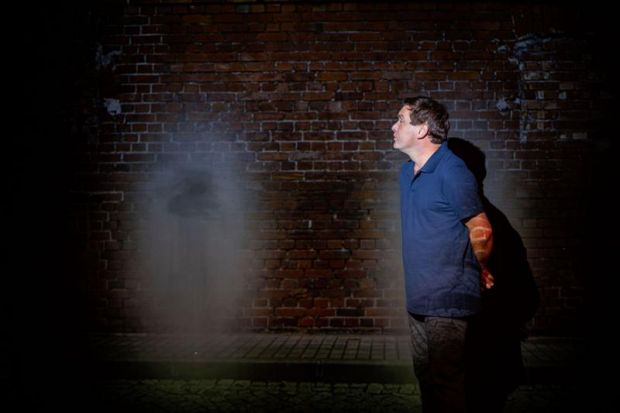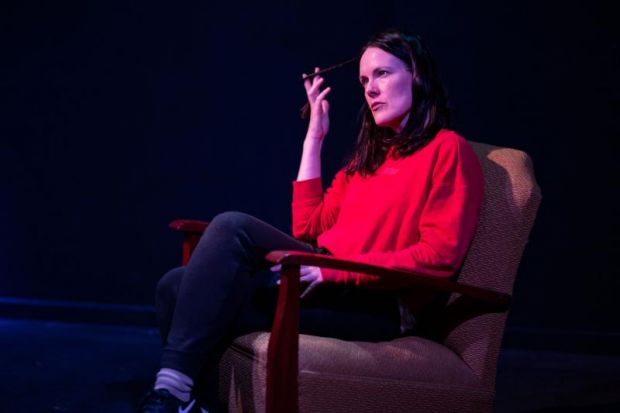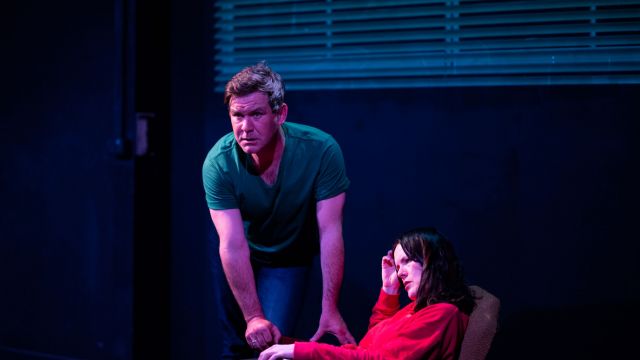Clock for No Time
Clock for no Time is written, directed, and in the first act, narrated, by Michele Saint-Yves, who herself has an acquired brain disorder and is a recent graduate in medical neuroscience. This is a mesmerising, thought-provoking, inclusive piece of theatre.
It’s performed at Rumpus’ Bowden studio, a quirky but flexible space, which the company has developed to be accessible to all. The company states that the piece is neurodivergent and dementia friendly, and there are many inclusive practices. It is relaxed, there are sensory experiences, an AUSLAN translator, screens and audio recordings, creative audio-descriptive rendered script, and even a 3D model. It is a wheelchair accessible venue and there are also Access Support workers to assist. This is what this play is aimed at – including all, caring about those around us, noticing how we can help others.
The space is used extremely well, with casual seating on varying levels and we are told we can move about as we need. Audio-visuals by Mark Oakley carry us from distant galaxies to the inner space of the human mind. Just stunningly clever.
The set is stark and clinical, and costume design is bright and draws focus. Designed by Bianka Kennedy and Katherine Cooper, ehese certainly complement the strong themes of the piece.

The actors are superb: Jo Stone as Simone, Paul Reichstein as her father, Ian, and Jennifer Liston as Margaret and an MRI technician. They inhabit their characters and interact personally with the audience in many ways. They demand our attention, and they get it.
This production is not easy to watch: whilst theatrically clever, it is confronting. We are involved in two stories that tug at the heart strings, particularly when many of us have experiences with the subject matter. We are looking at two main characters and their ‘shared experience of brains getting in the way of living’. Simone has an acquired brain injury, and her father Ian has advanced dementia. This performance explores both experiences - to quote Simone, ‘a person with an invisible disability and the daughter of the disappeared.’
It is bookended with beautiful singing by Liston – poignant and heart rending. We begin by accompanying Simone to her yearly MRI and, with her, are enveloped in the claustrophobia and clinical data-gathering this experience incurs. Images are projected of MRI brain scans, and she speaks about the dark parts of brain, likening them to the dark recesses of space. She says the experience ‘hollows out a space in me.’

This analogy then broadens to wonderful images of space, with comments by Carl Sagan and Diane Ackerman about living on our small blue dot encouraging us to question ‘is that all we are?’ We are a ‘lonely speck in a great enveloping cosmic dark’. The metaphor is gripping as we seem to hurtle around, insular and alone in the universe. Similarly in experiencing dementia, or other degenerative brain disorders, people live in the microcosm universe of their own minds.
We learn about the currently mapped part of our universe, Laniakea, and the linking cosmic flows and filaments that grow between galaxies, mirroring the filaments and neurons in our own brains. This is beautifully written and a clever comparison. As brain degeneration happens, we cling to memories as pathways delete, and small parts recede, travelling into an ever-increasing void.
Throughout the performance we are overloaded with medical terminology and explanation of clinical causes of both conditions. This focus on statistics is clever as it highlights how the confusing jargon and information only adds to distancing people as human beings from their conditions further.

Stone masterfully delivers monologues from various parts of the space: sometimes seated awkwardly, showing strong physicality and understanding of the pathology of acquired brain disorders, and sometimes amongst us, as a narrator, observing and sharing her memories of her parents – and particularly her father. Reichstein, as the father, Ian, is the epitome of a lost mind, displaying extreme ability to create a childlike, timid man with perfect physicality. At times he wanders around the audience introducing himself, smiling broadly, then reverts to a vague shell in his chair. At other times we see a frustrated man trying to cling to remnants of order - looking for routine in studying and commenting on the weather or collecting the paper.
He remembers the distant Latin words of the Lord’s Prayer from his schooldays but not who his wife and daughter are. Dementia is like drifting in space untethered. His only tether was his wife, played with great empathy by Jennifer Liston. This starkly reinforces to us, the importance of some form of constant in the bewildering chaos.
I confess as an audience member to being very tearful in watching the changes Simone remembered about how her parents were so full of life, then her Father’s decline: ‘Dad always craved immortality… (he) became timeless,’ she says.
We share this tiny blue dot with people with these disabilities every day: we MUST notice them, cradle them, and value them.
Shelley Hampton
Photograpger: Abbie Heuer.
Subscribe to our E-Newsletter, buy our latest print edition or find a Performing Arts book at Book Nook.

